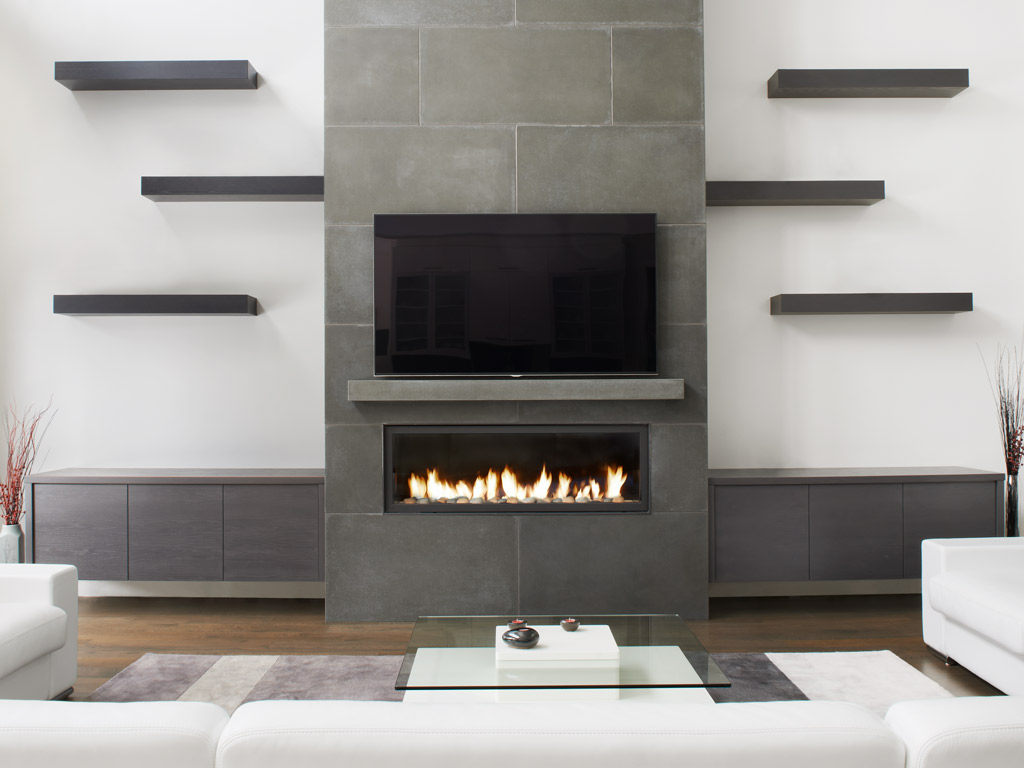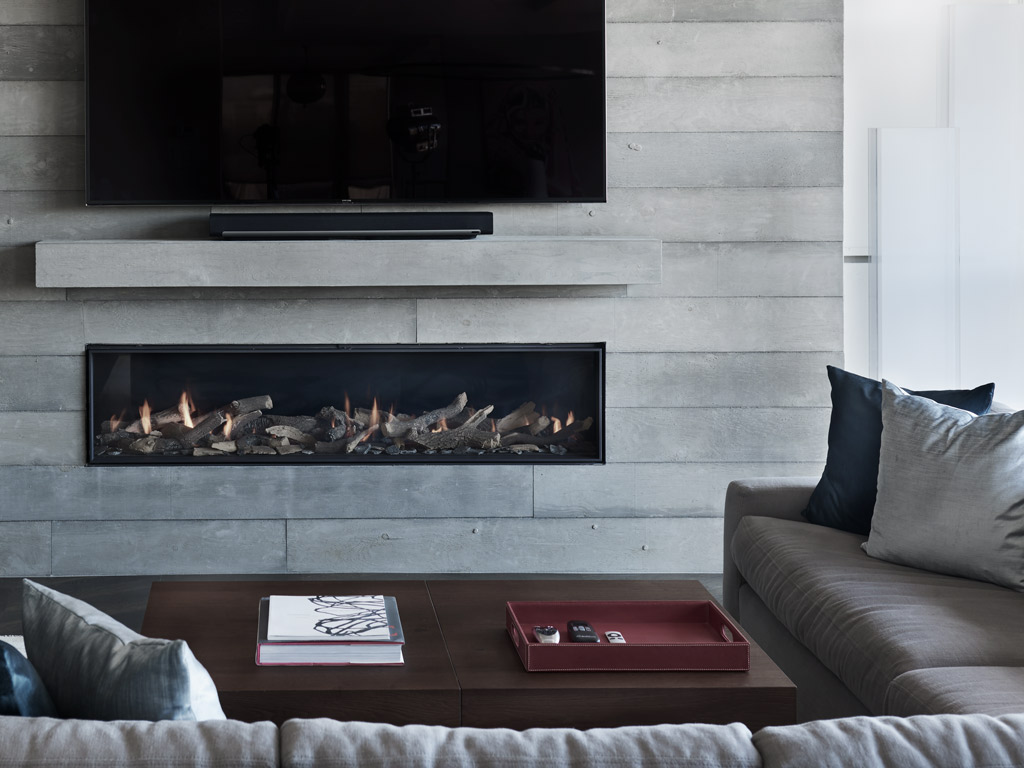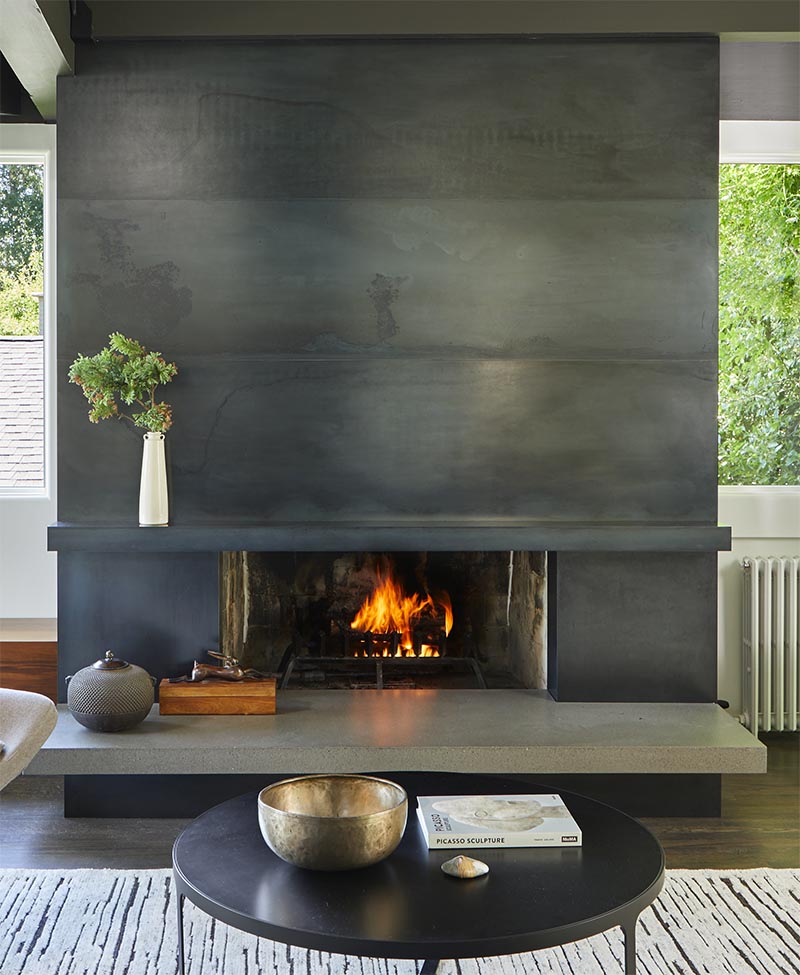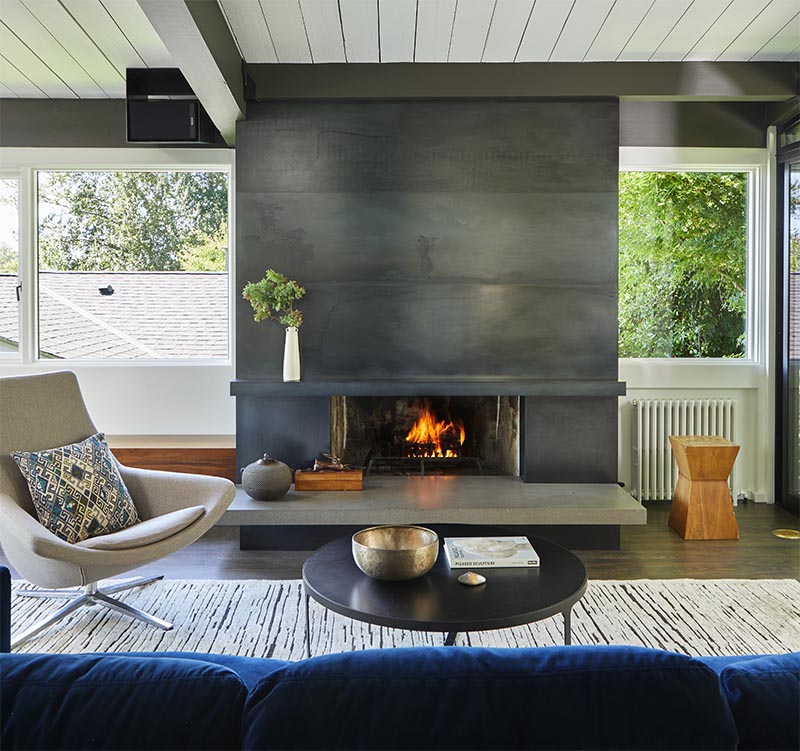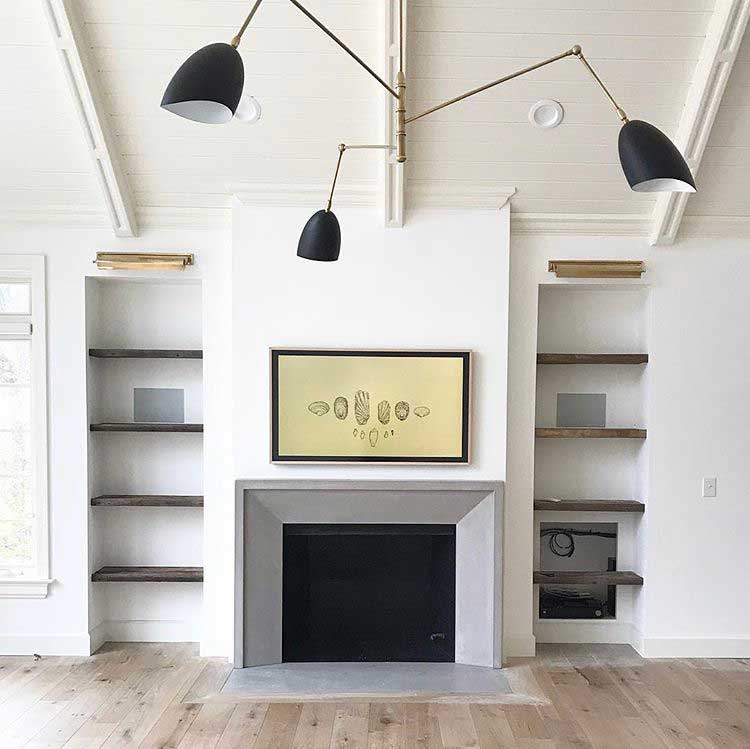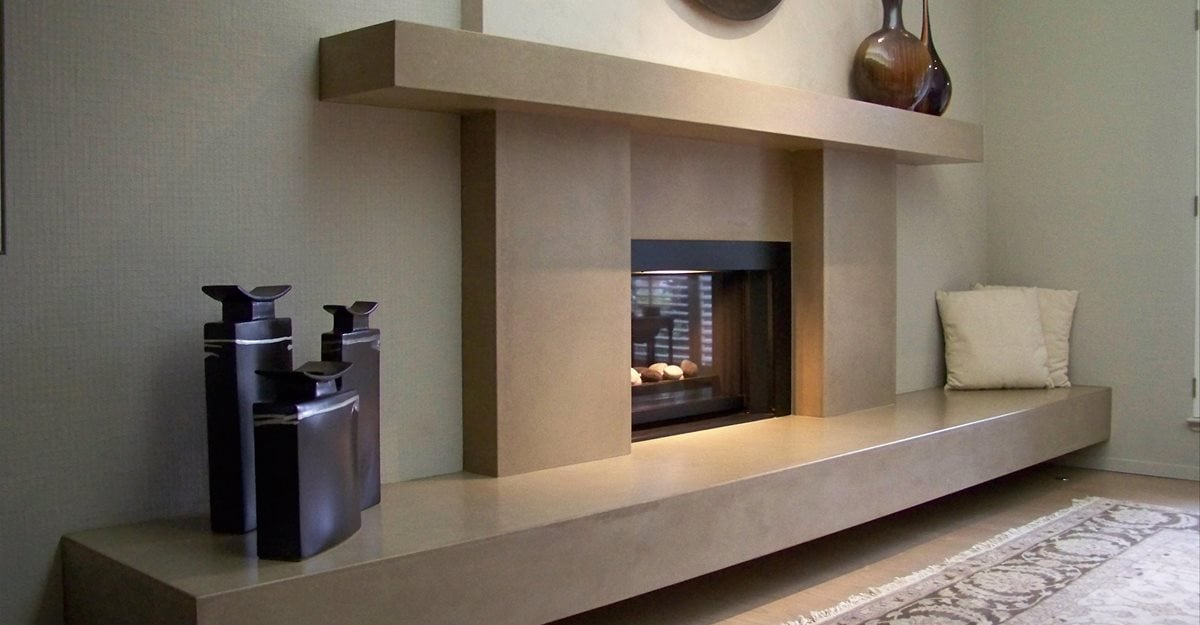A modern concrete fireplace surround brings a sleek, industrial edge to any living space while offering durability and timeless style. Unlike traditional brick or stone, concrete provides a minimalist look that works well in contemporary homes, lofts, and even rustic interiors when paired with the right decor. Its neutral tone acts as a perfect backdrop, allowing other design elements to shine. Let’s explore the benefits, design options, installation considerations, maintenance, styling tips, and how to choose the right concrete surround for your home.
Why Choose a Concrete Fireplace Surround?
Concrete surrounds are incredibly durable, making them a long-lasting choice for both indoor and outdoor fireplaces. Unlike wood or drywall, concrete resists heat damage and won’t warp or crack easily over time. It’s also low-maintenance, requiring only occasional dusting or wiping to keep it looking fresh. If you want a fireplace feature that stands up to daily use without constant upkeep, concrete is a smart option.
Another advantage is its versatility in design. Concrete can be molded into almost any shape, from sharp, angular forms to smooth, curved edges. It can be polished for a glossy finish, left raw for an industrial vibe, or even stained to mimic other materials like marble or limestone. Whether your style is ultra-modern or warm and organic, there’s a concrete surround that fits your vision.
Cost is another factor to consider. While custom concrete work can be pricey, prefabricated surrounds offer a more budget-friendly alternative without sacrificing style. Compared to natural stone, concrete is often more affordable while still delivering a high-end look. If you’re willing to DIY, lightweight concrete mixes or veneers can further cut costs while achieving a similar aesthetic.
Design Options for Concrete Surrounds
One of the biggest appeals of concrete is its adaptability. For a sleek, contemporary look, a smooth, monolithic slab with clean lines creates a striking focal point. This works especially well in modern lofts or minimalist homes where simplicity is key. You can also opt for a floating concrete mantel, which gives the illusion of a suspended hearth for a dramatic effect.
Textured finishes add depth and character to a concrete surround. Exposed aggregate, where small stones or glass fragments are visible in the surface, provides a rustic yet refined look. Alternatively, acid staining can introduce rich, earthy tones or metallic accents for a more artistic touch. If you prefer something softer, a lightly sandblasted finish reduces the industrial feel while keeping the material’s durability.
For those who love contrast, combining concrete with other materials can create a balanced design. Pairing it with warm wood accents softens the coldness of concrete, while integrating metal elements like steel or brass adds a modern edge. Even something as simple as a recessed niche in the surround for firewood storage can enhance both function and aesthetics.

Installation Considerations for Concrete Surrounds
Installing a concrete fireplace surround requires careful planning due to its weight and structure. If you’re building from scratch, reinforcing the surround with steel bars or mesh ensures stability, especially for larger designs. For existing fireplaces, a lightweight concrete veneer or precast panels can be applied directly over the current surround, reducing the need for major structural changes.
Ventilation and heat resistance are also important. While concrete handles heat well, proper clearance between the surround and the firebox is necessary to prevent excessive heat buildup. Most building codes require non-combustible materials within a certain distance of the fire opening, so always check local regulations before installation. Hiring a professional is recommended for complex projects to ensure safety and precision.
If you’re considering a DIY approach, modular concrete systems or pre-cast surrounds simplify the process. These kits often come with interlocking pieces that fit together like puzzle tiles, making them manageable for beginners. Just make sure your floor can support the weight, as concrete is much heavier than drywall or wood. Adding a sturdy base or reinforcing the subfloor may be necessary.
Maintaining Your Concrete Fireplace Surround
One of the best things about concrete is how easy it is to maintain. Dust and soot can be wiped away with a damp cloth, while tougher stains may need a mild soap solution. Avoid harsh chemicals or abrasive scrubbers, as they can dull polished finishes or scratch the surface. For sealed concrete, reapplying a penetrating sealer every few years helps protect against moisture and stains.
If your surround develops small cracks over time, don’t panic; this is normal due to the concrete’s natural settling. Hairline cracks can often be filled with a concrete patching compound and sanded smooth. For larger cracks or chips, consulting a professional ensures a seamless repair. Regular inspections, especially after extreme temperature changes, help catch issues early before they worsen.
To keep your concrete looking its best, consider occasional resealing, especially in high-humidity areas. A matte or glossy sealant enhances durability while preserving the desired finish. If you prefer a weathered look, leaving the concrete unsealed allows it to develop a natural patina over time, adding character without extra effort.
Styling Tips for Concrete Fireplace Surrounds
A concrete surround serves as a neutral canvas, making it easy to style with different decor themes. For a modern industrial look, pair it with black metal accents, leather furniture, and Edison bulb lighting. The contrast between raw concrete and sleek metals creates a bold, urban aesthetic. Adding a few indoor plants softens the hardness of the material while keeping the space fresh and inviting.
If you prefer a warmer, Scandinavian-inspired vibe, layer in natural textures like wool throws, jute rugs, and light wood furniture. The cool tone of concrete balances the coziness of textiles, preventing the room from feeling too sterile. A few well-placed candles or a stack of books on the mantel completes the look without overwhelming the simplicity of the surround.
For a more eclectic or bohemian style, use the concrete as a backdrop for colorful artwork, patterned tiles, or vintage decor. The neutrality of the material lets bold colors and textures take center stage. Even something as simple as a large mirror above the fireplace can amplify light and make the space feel larger while complementing the concrete’s minimalist appeal.
Choosing the Right Concrete Surround for Your Space
Before selecting a concrete surround, consider the size and layout of your room. A large, thick surround may overpower a small space, while a slim design could get lost in a grand living area. Take measurements of your fireplace and surrounding wall to ensure proportionality. If you have low ceilings, a horizontal surround can make the room feel wider, whereas a tall vertical design draws the eye upward.
Think about the overall mood you want to create. A dark-stained or charcoal concrete surround adds drama and sophistication, perfect for moody, intimate spaces. Light gray or white concrete, on the other hand, keeps things airy and bright, ideal for smaller rooms or coastal-inspired decor. Sample different finishes in your space to see how natural and artificial light affect the color throughout the day.
Finally, consider your long-term design goals. Concrete is a permanent feature, so choose a style that aligns with your taste and the home’s architecture. If you love change, opt for a neutral finish that can adapt to different decor styles over time. For those who prefer a statement piece, a custom-designed surround with unique textures or embedded elements ensures a one-of-a-kind focal point.
Is a concrete fireplace surround heat-resistant?
Yes, concrete is naturally heat-resistant and can withstand high temperatures, making it a safe choice for fireplace surrounds. However, prolonged exposure to extreme heat can cause minor surface cracks over time. To minimize this, ensure proper clearance between the firebox and the surround, and use a heat-resistant sealant if needed. While concrete won’t catch fire, it’s always smart to follow manufacturer’s guidelines for maximum heat tolerance.
Can I install a concrete surround myself, or do I need a professional?
It depends on the complexity of the design. Prefabricated or modular concrete surrounds are DIY-friendly, especially if you have basic construction skills. However, custom pours or large installations often require professional help due to concrete’s weight and the need for precise structural support. If you’re unsure, consulting a contractor ensures a safe and secure installation.
How do I clean and maintain a concrete fireplace surround?
Regular dusting with a soft cloth keeps the surface clean. For deeper cleaning, use a mild soap and water solution, avoiding harsh chemicals that could damage the finish. Resealing every few years helps protect against stains and moisture. Small cracks can be filled with concrete patching compound, while major damage may need professional repair.
Can concrete surrounds be customized in color and texture?
Absolutely. Concrete can be stained, polished, or textured to achieve various looks, from sleek and modern to rough and industrial. Acid staining creates rich, variegated colors, while polishing produces a smooth, glossy finish. You can even embed materials like glass or stone for a unique touch.
Are concrete surrounds expensive compared to other materials?
While custom concrete work can be costly, prefabricated options are often more affordable than natural stone. Lightweight concrete veneers or DIY kits offer budget-friendly alternatives without sacrificing style. Overall, concrete provides a high-end look at a mid-range price point.
Will a concrete surround make my room feel cold or industrial?
Not necessarily. While concrete has a naturally cool tone, pairing it with warm materials like wood, textiles, or metallic accents can balance the look. Proper lighting and decor choices also soften the industrial feel, making the space cozy and inviting.
Concrete Fireplace Inspiration and Our Plan for the New Build
Concrete Fireplace Surrounds, Hearths & Mantels
Related Posts:
